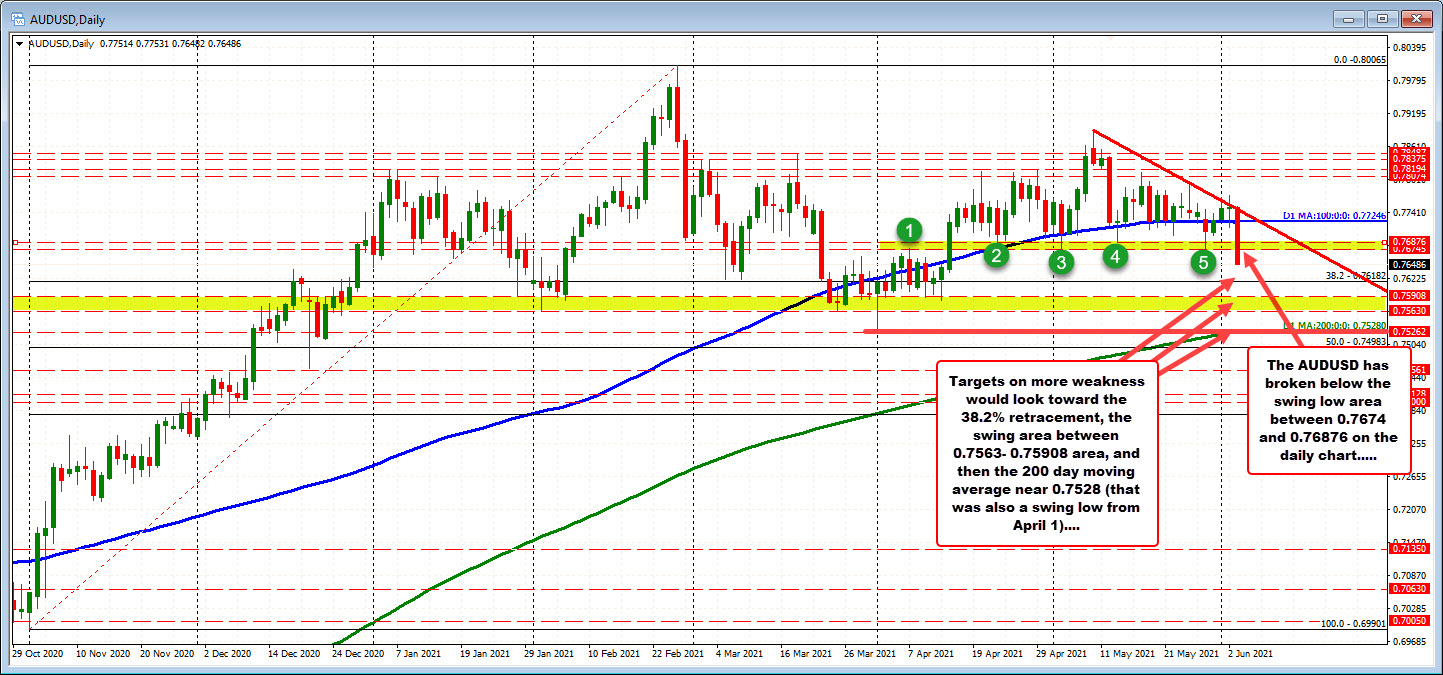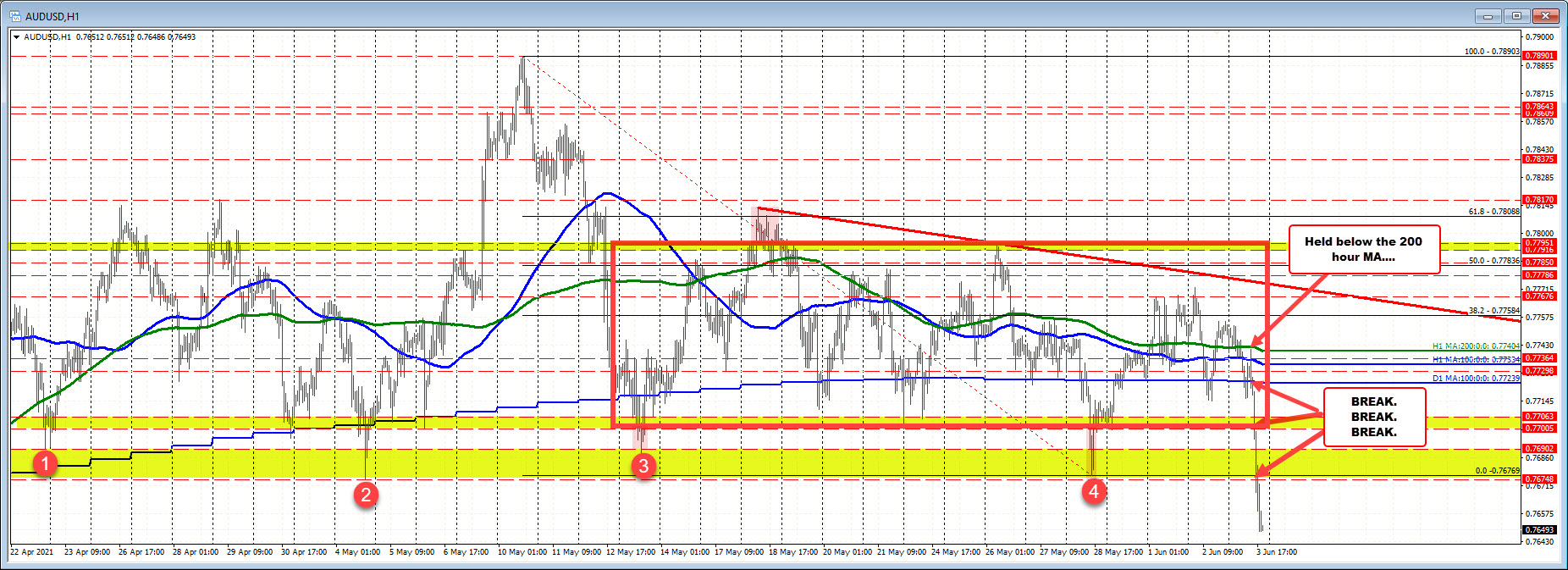Moves away from consolidation area.
The AUDUSD has been stuck within a trading value area between 0.7700 and 0.7795 since May 12. There was an extension to an extreme low to 0.76269 last week, but that was quickly erased.
Today, the pair saw a London session high that stalled just below the 200 hour moving average at 0.77404 (green line), and break -with momentum - back below the 100 day moving average at 0.77239. A
After the pair moved below the swing area between 0.7700 and 0.77063, the next target was the low from last week at 0.76769. That too was broken and has led to even lower levels.
The price is currently trading near the intraday low of 0.7647 as sellers trend the pair after the non-trending up and down market that confined the range since May 12 (see red box in the chart above).
Risk from the hourly chart now comes at the swing low from last week at 0.7676. Traders would want to see the price remain below that level. A more conservative stop would be the 0.7700 level. Moving back within the ”red box” would not be welcomed by shorts.
Taking a broader look at the daily chart, the next key downside target would be the 38.2% retracement of the move up from the November 2020 low at 0.76182 (that was the lowest level going back to July 2020 and started the run to the upside). Move below that level, and traders will start to look toward the 0.7563 to 0.75908 area.

Sellers took more control in the AUDUSD on the break outside of the up and down trading range. Now the question is, “Can the price remain outside that area?” If so, there is room to roam to the downside.
